-

Sanssouci Palace - Frederick II's favorite "carefree" residence, Potsdam
-

Start at the Brandenburg Gate, 1991
-

Reichstag and bend in the Spree in Berlin
-

The strip of wall next to St. Thomas Church in Kreuzberg
-

The remains of the "Wall" near St. Thomas Church in Kreuzberg as a scar of the division of Germany
-
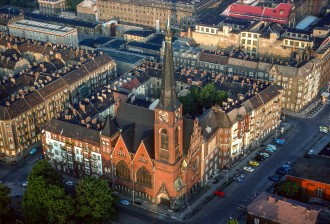
Berlin block with Zwingli Church in Berlin-Friedrichshain
-

Berlin's Gendarmenmarkt with the French Cathedral and former theater
-

Theater ruins, Old Town Hall and Nikolai Church in Potsdam 1991
-

The Elbe bridge near Dömitz, symbol of the division of Germany
-

Hovering over the Friedenskirche with a view of the gardens of Sanssouci Palace
-

Flying red deer in the shallow waters of Lake Müritz, once the hunting ground of the party leadership
-

Quedlinburg is famous for its medieval half-timbered houses
-

in 1990, the residents' lignite kilns also dominated the cityscape
-

Quedlinburg, old imperial city on the northern edge of the Harz Mountains
-

Quedlinburg, old imperial city on the northern edge of the Harz Mountains
-

The City-Hochhaus is considered one of Leipzig's landmarks and once housed the university as the "Uniriese" (university giant)
-

Refurbishment in stages, Leipzig City
-

Leipzig Trade Fair City, New Town Hall
-

Leipzig's main station, one of the largest terminus stations in Europe
-

-

Before Ketzin, the Havel Canal meets the Sacrow-Paretz Canal
-

Fruit blossom in Havelland near Ketzin
-
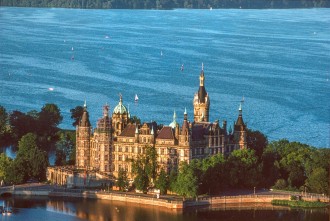
The state of Mecklenburg-Vorpommern meets today at Schwerin Castle
-

The Schwerin Residence Ensemble has been a UNESCO World Heritage Site since June 2024
-

With its countless playful turrets, Schwerin Castle, picturesquely situated on the lake, is one of the most popular castles in the world
-

Kombinat "Schwarze Pumpe", lignite gasification near Spremberg
-

Kombinat "Schwarze Pumpe", a dirt spinner, ecological emergency area
-

Gigantic lignite mining in the Lusatian coalfield
-

Huge chasms of torn up earth bear witness to decades of lignite mining
-

Lignite was the main source of energy in the GDR
-

Huge coal excavator in the 80-meter-deep opencast lignite mine near Spremberg
-

Lignite excavator behind demolished windmill near Gerbisdorf
-

Chemiekombinat Böhlen near Leipzig, the air tasted like matches when flying over it
-

Soviet barracks near Naumburg
-

Soviet army pioneer scrap near Werder
-

Soviet army pioneer scrap near Werder
-
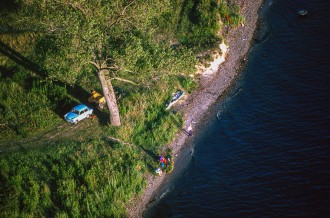
Picnic on the Unterwarnow near Rostock
-

Typical GDR campsite, Stresow Bay on the island of Rügen
-

A Sorbian village near Spremberg has already been cleared for future opencast lignite mining
-

Cleared site on the edge of lignite mining near Spremberg
-

Gabled houses from the 17th century line the market square in Wismar
-

Port and city center of Wismar, once a mighty Hanseatic city
-

Wismar was the second largest seaport in the former GDR
-

Spreewald idyll
-

Former Chorin monastery on the Amtssee lake, founded by Cistercian monks in 1258
-

Engine shed of the Deutsche Reichsbahn in Rostock
-

Combine harvester of an LPG harvesting near Puttbus, island of Rügen
-

Village church of Vilmnitz on Rügen
-

Elbe riverbank with Dresden Court Church
-
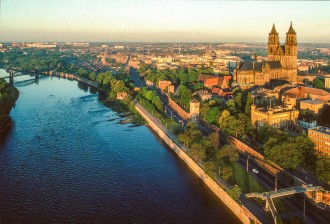
Magdeburg was once considered the strongest fortress in Prussia, Magdeburg Cathedral and city wall on the Elbe
-

Not only barges find their way into the interior of the Spreewald
-

Bautzen, medieval town center of the city of the Sorbs
-

View of the Haputmarkt and Alter Wasserkunst in Bautzen
-

Meissen became famous above all for its porcelain manufactory
-

The Wartburg on the Wartberg, Thuringian Forest
-

Martin Luther translated the New Testament from the Greek at Wartburg Castle
-

Kyffhäuser monument - what happened to the legend of Emperor Rothbart?
-
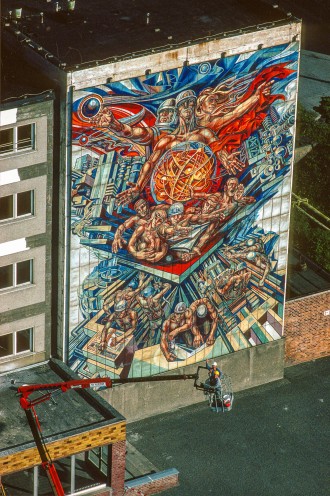
Administration building of Wismuth AG, uranium mining near Ronneburg/Gera
-

Socialist concrete slab housing estate in the satellite town of Prohlis, Dresden
-

Almost completely destroyed in the hail of bombs in February 1945, Dresden was a major construction site in 1991
-

Dresden, Florence on the Elbe, once one of the most beautiful baroque cities on the continent
-

Old tobacco office in Dresden
-

Pillnitz, pleasure palace and baroque palace park of Augustus the Strong
-

Pillnitz, pleasure palace and baroque palace park of Augustus the Strong
-

Pillnitz, the Bergpalais as a mirror image of the Wasserpalais on the Elbe
-

Winter atmosphere in a village near Beierfeld, Erzgebirge
-

Vilmnitz village church, Rügen
-

Lutherstadt Erfurt, Domberg with cathedral and St. Severi Church
-
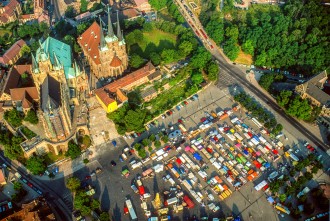
Today, market stalls once again fill the huge cathedral square in Erfurt
-

The trading and university city of Erfurt is over 1200 years old
-

Mecklenburg was shaped by the ice age
-

The old town center of Werder is located on an island in the Großer Zernsee
-

-
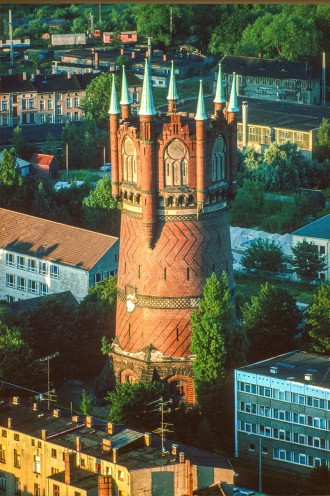
Old water tower in Rostock
-
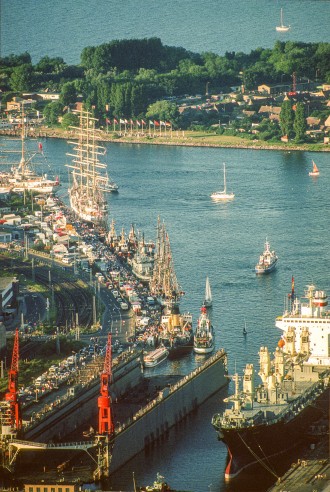
Tall ships from all over the world came to the Hanse Sail 1991 in Rostock
-

Ruins of the brick Gothic Georgenkirche church in Wismar
-

Trading and warehouses in Rostock
-

Snow caps over quartz sandstone, climbing paradise Saxon Switzerland, Rauenstein
-

Typical rock formation of the Elbe sandstone near Rathen
-

Elbe Sandstone near Rathen, the Elbe cuts through the Table Mountain region
-

Snow-covered rock formations in Saxon Switzerland
-

We float silently over the Rätzsee in Mecklenburg
-

Grosser Plessower See, Havelland near Werder
-

Spreewald barges waiting for tourists
-

The palace and artistic landscape of the gardens on the Neisse swallowed up Prince Pückler-Muskau's entire fortune
-

Idyllic sailing on the Beetzsee
With the balloon over East Germany (1991)
Together with Nord/LB and Interflug, Kajo applied for permission to launch a hot-air balloon over the GDR in 1990. With the support of the state airline, we were eventually able to achieve 60 launches. Many proposals failed because they were too close to Russian military installations. Floating over a landscape in a hot-air balloon is one of the most beautiful flying experiences. What an enhancement to explore a Germany from the air that had hardly changed since the end of the world war. For a photographer, however, the hot air balloon can also be an extremely frustrating aircraft, as it is not the pilot who determines the direction of travel of the mobile vantage point, but the wind. Too much or too little wind or thermals also prevent a take-off. We covered over 30,000 km with a VW bus and trailer in order to take advantage of the few hours available. The wind direction, wind strength and sunny, thermal-free times of day had to be right. The volume published by KaJo-Verlag in 1991 (author: Martin Ahrends) was reprinted several times.
